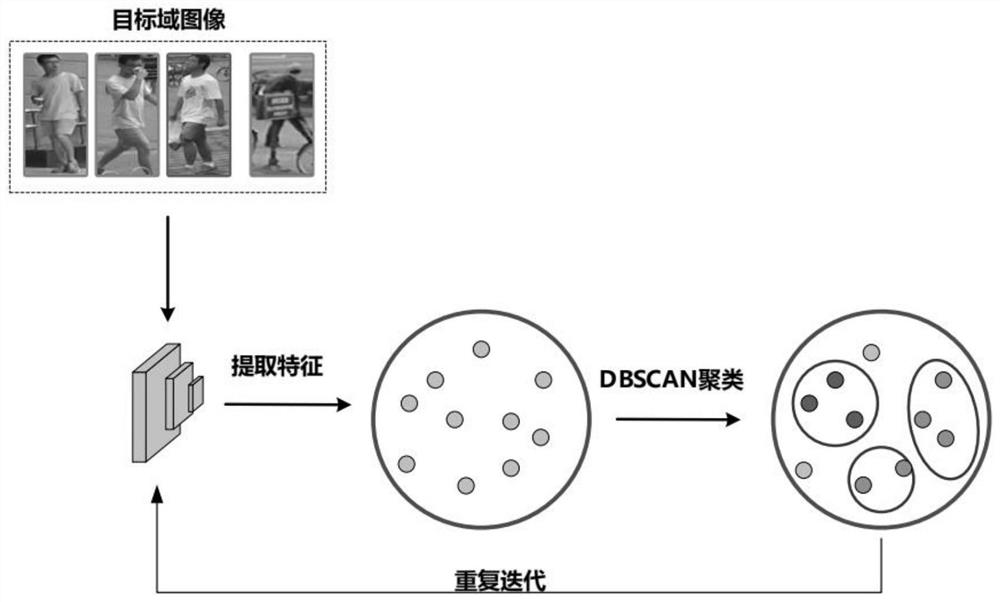Domain adaptive pedestrian re-identification method based on mutual divergence learning
A pedestrian re-identification and domain-adaptive technology, applied in the field of pedestrian re-identification, can solve the problems of improved false label noise performance, limited transferability of source domain features, and unknowable image labels in the target domain, so as to reduce distribution differences and increase Effects of Diversity and Reliability
- Summary
- Abstract
- Description
- Claims
- Application Information
AI Technical Summary
Problems solved by technology
Method used
Image
Examples
Embodiment Construction
[0033] The present invention will be further explained below.
[0034] Such as figure 1 As shown, a domain-adaptive pedestrian re-identification method based on mutual divergence learning of the present invention includes the following steps:
[0035] Step 1, data set preparation and preprocessing:
[0036] The datasets include source domain datasets with complete annotation information and target domain datasets without any manual annotation information.
[0037] Three public datasets Market-1501, DukeMTMC-ReID, and MSMT17 commonly used in the field of pedestrian re-identification research are used as the datasets for this training model. Market-1501 This dataset contains 1501 pedestrians and 32688 labeled images from 6 different cameras. Among all images, 12936 images of 751 pedestrians are used for training, another 3368 images of 750 pedestrians are used for query, and 19732 images of 750 pedestrians are used as gallery. The identities between training images and galle...
PUM
 Login to View More
Login to View More Abstract
Description
Claims
Application Information
 Login to View More
Login to View More - R&D
- Intellectual Property
- Life Sciences
- Materials
- Tech Scout
- Unparalleled Data Quality
- Higher Quality Content
- 60% Fewer Hallucinations
Browse by: Latest US Patents, China's latest patents, Technical Efficacy Thesaurus, Application Domain, Technology Topic, Popular Technical Reports.
© 2025 PatSnap. All rights reserved.Legal|Privacy policy|Modern Slavery Act Transparency Statement|Sitemap|About US| Contact US: help@patsnap.com

